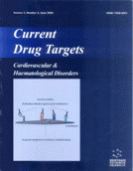Abstract
Epidemiologic and experimental observations suggest high density lipoprotein (HDL) has a protective effect against atherothrombotic vascular disease. These findings have stimulated considerable interest to promote HDL as a potential therapeutic strategy. Several exciting therapeutic strategies have recently emerged and currently are the focus of intense research interest. One approach is the direct administration of HDL or its components such as apolipoprotein A-I (apoA-I). Recently, much attention has focused on a naturally occurring variant of apoA-I, apoA-IMilano (apoA-IM) characterized by a cysteine for arginine substitution that is associated with low rates of vascular disease and significant longevity in its carriers, despite markedly reduced HDL and elevated triglyceride levels. The mutation alters the characteristics of the protein resulting in apoA-IM being functionally more effective than normal apoA-I. A number of animal and laboratory studies have demonstrated significant antiatherogenic, antiproliferative, antirestenotic, antiplatelet, antithrombotic, antiinflammatory, and antioxidant properties of apoA-IM. Furthermore, apoA-IM has been shown to promote reverse cholesterol transport, improve endothelial dysfunction and induce rapid mobilization of tissue cholesterol resulting in regression and alteration of plaque composition in animal models of atherosclerosis. Recently, a pilot clinical trial of recombinant apoA-IM demonstrated significant and rapid regression of atherosclerosis as measured by intravascular ultrasound in patients with acute coronary syndromes. These promising data provide the rationale for the development of reconstituted HDL utilizing recombinant apoA-IM as a potential therapeutic approach for atherothrombotic vascular disease in humans.
Keywords: high-density lipoprotein (HDL), apoA-IM mutant, Intimal Hyperplasia, Atherosclerosis, vasculoprotective, fibrinolytic agents
 3
3













